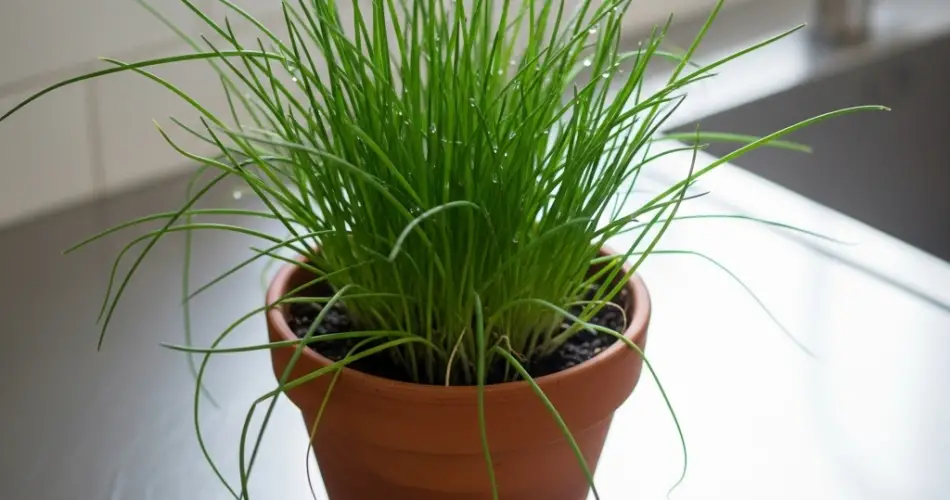Chives are one of the easiest and most rewarding herbs to grow at home. Whether you’re adding a fresh garnish to scrambled eggs, sprinkling them over baked potatoes, or folding them into cream cheese, chives bring a mild onion-like flavor that elevates everyday dishes. But not all homegrown chives are created equal—some grow spindly and weak, while others thrive with thick, lush green stalks and intense flavor.
If you’re dreaming of a steady supply of thick, flavorful chives from your windowsill, balcony, or backyard, the secret lies in providing the right conditions, proper harvesting techniques, and regular maintenance. Here’s how to do it right.
Choose the Right Variety
There are two main types of chives to consider:
-
Common Chives (Allium schoenoprasum): These are the most widely used, with thin, tubular leaves and a mild onion flavor.
-
Garlic Chives (Allium tuberosum): Also known as Chinese chives, these have flat leaves and a subtle garlic taste.
Both types grow well at home, so choose based on your preferred flavor and appearance.
Start with Good Soil
Chives aren’t picky, but they do thrive in loose, rich, and well-draining soil. If you’re planting in containers, use a high-quality potting mix with good moisture retention and drainage. You can also amend your garden soil with compost or aged manure to give your chives the nutrients they need.
Ideal soil pH is between 6.0 and 7.0. Avoid heavy clay soils unless they’ve been well amended.
Ensure Adequate Sunlight
Chives need at least 6 hours of sunlight each day to grow thick and flavorful. A sunny windowsill, balcony ledge, or garden bed with full sun exposure is perfect. In very hot climates, some afternoon shade can help prevent stress, but too little sun will result in leggy, weak growth.
If you’re growing indoors and don’t have access to strong natural light, consider using a grow light to keep your chives compact and vigorous.
Water Regularly—But Don’t Overdo It
Chives like consistent moisture but dislike soggy roots. Water when the top inch of soil feels dry, ensuring water drains freely from the bottom of the pot. In the ground, mulch around your chive clump to retain moisture and suppress weeds.
Overwatering can lead to root rot, while underwatering may cause the leaves to become thin and dry.
Divide and Conquer for Thicker Growth
One of the best-kept secrets to thick chive plants is regular division. Every two to three years, dig up your chive clump and divide it into smaller sections. Replant each section separately.
This stimulates new root and leaf growth, preventing overcrowding and keeping the plant productive. Dividing is best done in early spring or late summer.
Feed Lightly but Regularly
Chives don’t need heavy feeding, but a light boost can enhance flavor and growth. Apply a diluted liquid fertilizer (such as fish emulsion or a balanced organic formula) once every 4–6 weeks during the growing season. Alternatively, sprinkle compost around the base of the plant for a slow, steady nutrient release.
Avoid over-fertilizing—excess nutrients can lead to bland flavor and overly lush but weak leaves.
Trim Often to Encourage Bushing
Regular trimming is essential for keeping chives thick and productive. The more you cut, the more they grow back. Here’s how to do it properly:
-
Use sharp scissors or garden shears.
-
Cut chives down to about 1 to 2 inches (2.5–5 cm) above the soil.
-
Harvest from the outside in, taking the oldest leaves first.
-
Avoid snipping just the tips—this leads to uneven growth.
By cutting close to the base, you encourage the plant to send up new shoots, resulting in a fuller, bushier appearance.
Watch for Pests and Diseases
Chives are generally pest-resistant, but occasional issues can arise:
-
Aphids and thrips may cluster around new growth. Use a gentle spray of water or neem oil to control them.
-
Fungal issues, like downy mildew, can develop in overly humid or crowded conditions. Improve airflow and avoid overhead watering if you see spots on the leaves.
Let Some Flower—but Not All
Chive blossoms are not only beautiful but also edible and loved by pollinators. However, allowing too many flowers to form can slow leaf production. If your goal is thick, leafy growth, pinch off most flower buds and allow just a few to bloom.
You can also harvest the flowers before they fully open and use them in salads or vinegars for a decorative, oniony flair.
Overwintering Tips
In colder regions, chives will die back in winter and return in spring. If growing in containers, you can bring them indoors to a sunny spot to keep harvesting year-round. Cut back dead foliage and reduce watering during dormancy.
Conclusion
Growing thick, flavorful chives at home doesn’t require much space or effort, but it does benefit from a thoughtful approach. Start with healthy soil, provide enough sun, and trim often to encourage bushy regrowth. With regular maintenance, even a small pot of chives can yield months of harvests, adding vibrant flavor to your kitchen creations. Whether grown indoors or outside, chives are a must-have herb for any home gardener.



